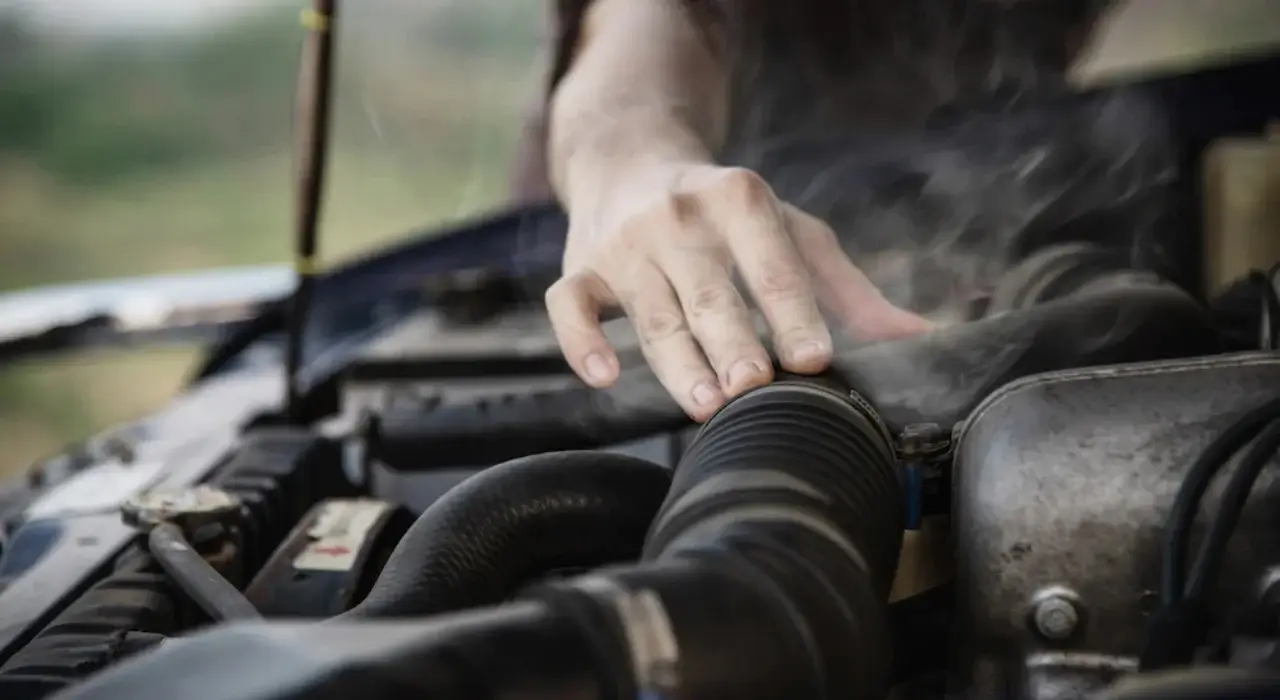One of the most common problems people have with their car is overheating, it can be a game changer when driving off-grid especially if you don’t know what you’re doing. In this blog, I will be talking about how overheating is caused, what to do when your car overheats, and how to prevent it.
How Overheating is Caused:

Coolant Issues:
- Empty Coolant: If your coolant level is low enough, there won’t be sufficient coolant to take heat away from the engine.
- Coolant Leak: If the cooling system is leaking, most of the time from a hose, radiator, water pump, or head gasket, it can lead to a loss of coolant and therefore overheating.
Broken Thermostat:
- When your thermostat thermostat gets stuck in the closed position, it prevents coolant from flowing through the radiator which causes the engine to overheat.
Radiator Problems:
- Clogged Radiator: After use, debris gets stuck in the radiator, reducing its efficiency in ventilating the engine leading to more heat.
- Broken Radiator Cap: A sup-paar radiator does not keep the proper pressure in the cooling system, leading to overheating.
Water Pump Failure:
- The water pump has the job of circulating coolant through the engine and radiator. If it fails, the coolant can’t circulate properly, therefore overheating.
Cooling Fan Issues:
- The cooling fan helps remove heat from the radiator. Therefore when it breaks down or malfunctions, it can quickly cause overheating inside the engine.
Blocked Hoses:
- Restrictions in coolant hoses can impact the flow of coolant, preventing coolant from regulating engine temperature.
Engine Oil Issues:
- Low or dirty engine oil increases the friction and heat within the engine due to there being more points of contact, therefore your engine overheats more quickly.

Faulty Temperature Sensor:
- Broken engine temperature sensors can provide false readings to the vehicle’s computer, which leads to improper cooling system operation, or further damage inside the engine before triggering a warning
Driving Conditions:
- Hot weather can put further stress on the engine, especially if it’s already faulty.
- Stop-and-Go Traffic: Extended periods of idling or stopping and starting around traffic can limit airflow through the radiator due to the increased level of CO2 in the air, causing the engine to heat up.
Radiator Cap:
- The radiator cap helps maintain the correct pressure in the cooling system. If the cap is broken it can leak pressure causing the coolant to run more slowly through the engine and therefore causing overheating.
How to Fix an Overheated Car:
If the temperature gauge in your car is well within the red, you can see smoke, or if you can smell something burning. Then that most likely means that your car is overheating.
Immediately pull over at the next safe location, if you decide to continue driving it can cause severe damage to the engine.

Turn off the car as soon as you stop, allow the car to sit and rest for about 15-20 minutes before opening the hood to allow air to circulate in and out for further cooling.
If the car still feels too hot to touch wait another 5 minutes before testing again. When the temperature feels manageable inspect the coolant levels to see if there is enough, or if you have the right type of coolant in the car already.
Wether you find your coolant levels low or not, you should always look under your car to see if there is anything leaking from the car. If there is, then isolate the source of the drip and deal with the problem from there.

If you can’t find any leaks or problems with the coolant, inspect the radiator cap. Because if the radiator cap is faulty it can lead to reduced pressure in the cooling system.
If the radiator cap is functioning, check the radiator fan. It could be that the belt is loose or broken.
Lastly, inspect the thermostat and check it isn’t broken. Sometimes it can give you a false reading which leads to people thinking their car is overheating. After a crash or a sudden jerk, the hand on your temperature gauge (If you have one) can be set false. An easy way to fix this is leaving your car out overnight then coming back and manually adjusting the hand.

How to Prevent Overheating:
Through regularly maintaining your car and following the manufacturer’s recommended maintenance schedule for your vehicle, you can greatly reduce the chances of your car overheating. This includes regular checks and changes of engine coolant, thermostat, radiator cap, and other system components.
Coolant flushing periodically helps remove any grime and dirt and ensures the coolant system maintains good pressure and ensures longevity. I also like to inspect hoses and belts to check for signs of damage. Replace any that appear cracked, brittle, or worn.

The best ways to prevent overheating are maintaining the parts of your car the directly impact the cooling system, radiator maintenance is another important part of the cooling system. Keep the radiator clean and free of debris, check it regularly and remove any accumulated dirt or other things. Ensure that the radiator fins are straight and not bent, as this can affect airflow.
Other important parts of the cooling system that you should maintain are: The radiator cap, Coolant/Water Mix, Radiator Fan, and Thermostat. Ensure these things are all up to date, in order and working. If any of these things are faulty it wont be long before overheating it can quickly lead to overheating.

Other than maintaining the important parts of the cooling system, a good practice to get into is monitoring the temperature gauge. Monitor your temperature gauge while keeping an eye on the road while driving. If you notice the temperature rising unusually, then pull over and check if any part of the cooling system is faulty.
A common mistake that many people make when going off-roading is overloading. Avoid overloading your vehicle, because it can put strain on the engine which contributes to overheating. Look online or in the driver’s manual for maximum load capacity.
Lastly, drive responsibly. Smooth driving reduces the engines workload and helps maintain a stable temperature inside the engine. Avoid aggressive driving, such as fast acceleration and extended periods with high revs, especially in high temperatures.


